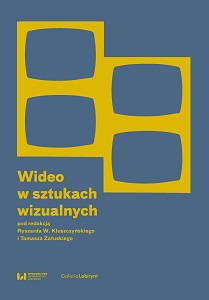
We kindly inform you that, as long as the subject affiliation of our 300.000+ articles is in progress, you might get unsufficient or no results on your third level or second level search. In this case, please broaden your search criteria.

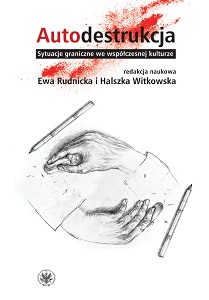
The aim of the article is to examine how the social concept of suicide was shaped by the media and what the pragmatic and cultural dimension of press reports on suicide was during the World War I period. Th e analyses start with a review of the ways of referring to the act of taking one’s own life in the Polish language. The main part of the article is comprised of a linguistic analysis of the reports concerned with suicide found in the daily press from the years 1914–1918.
More...
The article is concerned with the findings from an analysis of materials from Polish media with the broadest reach, featuring information on the online Blue Whale challenge. The key issue is whether and how do the media implement the WHO recommendations for reporting on suicide. Although the existence of the challenge had not been proven by anyone, it caused a panic in the media and consequences in the form of self-harm, suicide attempts and suicides among teenagers. It is important to determine whether the media could have contributed to the suicidal incidents through their publications.
More...
The studies discussed in the article are concerned with the situation of Deaf people in Poland. Being Deaf does not only refer to the medical condition, but it is also a term that defines a strong cultural identity. In the first part, the key studies relevant for further deliberations on the issue of suicide among Deaf people were described. Gaps in research have also been identified and the author has indicated different studies which should be carried out. In the second part, the author describes the most important factors increasing and decreasing the risk of suicidal behaviours among Deaf people in Poland.
More...
The article represents a cultural-studies attempt at examining the ways of dealing with the issue of death, suicide, and pain connected with the loss of a loved one, portrayed in books mainly aimed at children. Many of the works present dying as an element of a natural cycle, which enables the young reader to become familiarized with this difficult topic. A conversation about the loss of a family member, a grandmother or grandfather, is also helpful in this respect – it is one of the important themes currently featuring in children’s literature. The author notes, however, that it is not easy to explain to a child what taking away one’s own life is. Suicide remains a taboo subject.
More...
The article is concerned with an interpretation of Krzysztof Skonieczny’s Ślepnąc od świateł in the context of elements of the self-destruction of the city and of the social class that the creative class is. The author refers to studies on suicide among members of the creative class and points to aesthetic and thematic tropes in the original novel by Jakub Żulczyk which prove that it has been intentionally shaped as a reflection on self-destructive tendencies in contemporary creative and corporate culture.
More...
The article attempts to present the works of John Maxwell Coetzee from the perspective of disability studies. By conducting a cross-sectional analysis of selected novels from the early and late period of the Nobel Prize laureate’s works, the author tries to show how the ethical and narrative aspects of Coetzee’s novels contribute to challenging the normative models of portraying disability, consistently reproduced in traditional literary works and cultural discourses.
More...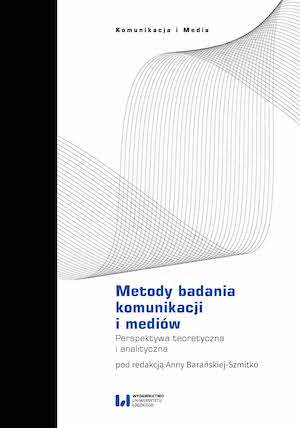
In this article, I present the possibility of applying a rhetorical research perspective to the analysis of audio-visual cultural texts of a documentary nature. The group of these texts includes reportage that is created today for the needs of television and is made both by journalists and film directors. The use of rhetoric as a method of researching these reports sets the general direction of research on audio-visual text and shows an affinity with rhetoric used in literary studies. Research on the rhetoric of television reportage – is understood as a study of how the rules of neoclassical rhetoric are used to create an effective statement. It concerns the study of the composition of the audio-visual text, the way of argumentation, persuasiveness and the "author's message". The rhetorical analysis allows you to check whether the reportage has been constructed correctly, and whether the structure has formally attractive features. Rhetoric examines the relationship between what is workshop and what is artistic in the media coverage.
More...
The research premise addresses the question whether and how the historical politics of Germany and Austria affects the cinematic representations of Jews. Both countries are responsible for the consequences of World War II, but they have dealt with their wartime heritage differently. The dissertation investigates to what extent the assumed rhetoric of the debate on Nazism and the Holocaust shapes the cinematic representations of Jews. Also, taking into account the present situation of the Jewish minority in these countries. Selected examples from Austrian and German films make up interesting research material for comparative analysis. By stressing possible similarities and differences between the two national cinemas, it allows to capture certain patterns in presenting Jews as well as indicates their national invariants. The methodological approach draws on theories in the field of memory studies. Particular attention is directed to the question whether analysed films reproduce anti-Semitic stereotypes, or whether their approach is creative and subversive. The dissertation also reflects on the problem whether the generation of Survivors and their descendants are presented in the same way, or whether their cinematic images are constructed in relation to the same or different stereotypes: the Jew as the Other, or the Jew as a Victim?
More...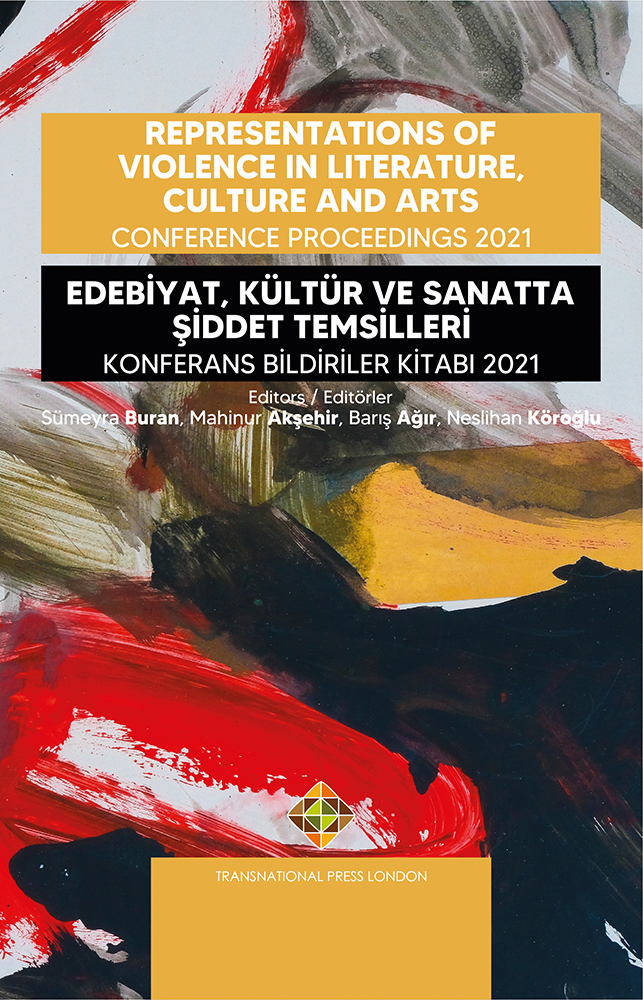
The issue of violence has been a global phenomenon. Representations of violence in literature, culture and arts have been universally experienced and as a consequence it is significant to trace the root cause of all forms of violence. The living organisms are prone to violence – whether it is a human being or any other species, violence is everywhere. Structural violence constitutes all forms of violence. As Freud has figured out that there are different layers of mind and the layers produce different levels of consciousness (Freud, 1913). Michel Foucault’s theory of power establishes the relation between knowledge and power and both these factors are responsible to impose control over societal institutions. Power is one of the means through which someone could impose restrictions on the other. Structural violence is one of the tools of depriving people of their basic needs. The present paper attempts to interrogate the societal structure to make some findings of the politics of structural violence in the selected films. The paper also intends to focus on the responsible factors of gender violence and its impact on a larger scale through popular culture.
More...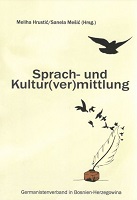
The essay is a corpus analysis of swear words and vulgarisms and their meaning in the television series Kosti. On the one hand it shows the translation of swear words and vulgarisms from Serbian language into German and on the other hand are possible interpretations of the vulgar Serbian expressions into German analysed, which are used for the subtitles of the series. The hypothesis whether swear words and vulgarisms in the target language German can be attenuate or, depending on the situation, even completely left out, is examined by using interlingual subtitles and quantitative reduction.
More...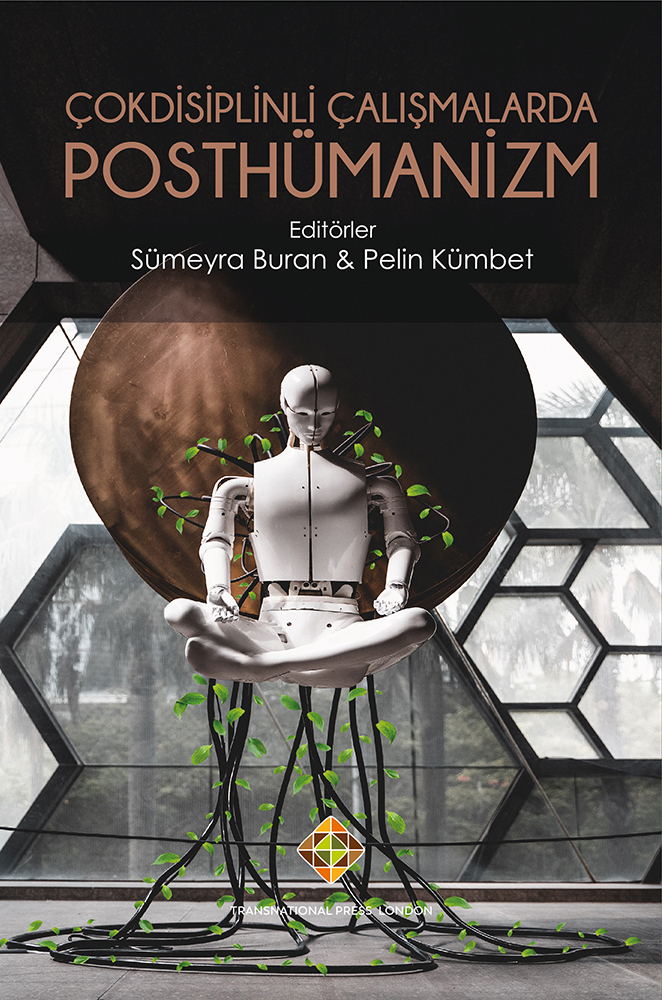
Posthümanizmi Fransız yazını ve sanatı üzerinden okumadan önce, posthümanizmin epistemolojik olarak ne olmadığının kısa bir panoramasını sunmak yararlı olacaktır. Dolayısıyla René Descartes rasyonalizmi ve Ferdinand de Saussure yapısalcılığı, üzerinden geçilmesi gereken düşünce sistemleridir. Bunun nedeni ise Fransız yazınının ve sanatının, tarihi boyunca kavramları zıtlıklar üzerinden tanımlama yöntemini benimsemiş olan Batı düşüncesinden ayrı düşünülememesidir; nitekim sanat, içinde bulunduğu koşullara göre şekillenir. Sözünü ettiğimiz alışılagelmiş Batılı ve rasyonalist düşünceye göre kavramlara belli bağlamlarda anlam yükleyen ögeler, kavramların karşıtlarından başkası değildir.
More...
İnsan ve teknoloji arasındaki ilişkinin eskisinden farklı bir boyuta taşındığı bir çağda yaşamaktayız. Bu çağ, doğa ve teknolojiyle aramızda oluşturduğumuz varlık hiyerarşisinin yerinden edildiği, ideal insan ve beden tanımının sorgulandığı bir aşama zeminine ev sahipliği yapmaktadır. Birçok disiplinin bir araya gelmesiyle oluşan bu zemin “posthümanizm çalışmaları” başlığı altında tartışılmaktadır. İkinci Paylaşım Savaşından1 sonra ortaya çıkan siyasi, ekonomik gelişmeler ve toplumsal hareketler posthümanizm fikrinin oluşmaya başladığı zamanlardır. Posthümanizmin ana çıkış noktası da tam olarak insan aklının ve özelde Batı merkezli hümanizm anlayışının sorgulanması, insanın kendisi dışındaki varlıklara karşı üstünlük iddialarının reddi ve teknolojik gelişmelerin de hesaba katıldığı yeni bir aşamanın gerekliliğidir.
More...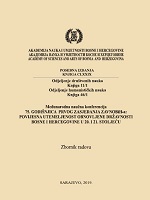
The significance of the celebration on November 25, 1969, is that the date of that year was officially recognized on the state holiday of the Socialist Republic of Bosnia and Herzegovina. The marking of this important date from the history of Bosnia and Herzegovina lies in the context of important political, economic, social, cultural and other changes in the Yugoslav state wich have been gradually taking place since the mid-60s, when they gave major political powers to the republic goverments. As this process has proceeded in Bosnia and Herzegovina, it can be analyzed as an example of marking the 26th anniversary of ZAVNOBiH. On this festive days in Sarajevo on November 29th, on the Day of the Republic, Josip Broz Tito attended the premiere of the film Battle of Neretva in the newly opened modern center of Skenderija. A day after, at the solemn session of the Academy of Sciences and Arts of Bosnia and Herzegovina, he was awarded the first honorary member of these most scientific institution in Bosnia and Herzegovina. Also, this was the time of strog sensivity of the Yugoslav public towards Bosnia and Herzegovina after the devastating earthquake in Banja Luka and Bosanska krajina, which occured only a month earlier (October 27, 1969). The postponed population Tito visited the day later and promised them the assistance of the entire Yugoslav community. The significance of Bosnia and Herzegovina in the constitution of the Yugoslav state Tito also emphasized on November 29 for the premiere of the film with a well-known theme from the Second World War and a reminder of the heroic battles that took place in Bosnia and Herzegovina’s territory. Otherwise, the association with the events of the National Liberation War was an integral part of all introductory speeches on the occasion of marking socialist holidays. The joint celebration on 25 and 29 November 1969 in Sarajevo was also the last with great hopes and expections in the coming 70s.
More...
This article describes some features of modern Russian speech, through an analysis of the phonetic, lexical, morphological and syntactic material in the film “Serf”. This material can be used in teaching Russian to foreign higher education students with advanced language skills.
More...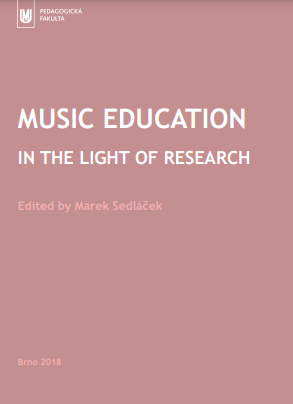
Hanns Eisler’s Suite for Septet No.1 op.92a (Variations on American Children’s Songs) is film music, composed for Joseph Losey’s documentary, A Child Went Forth, shown in 1942. The musical content of the film, about children’s summer camp, has been adopted from such nursery rhymes as Little Ah Sid, Strawberry Fair or Sourwood Mountain. This study points out, besides the work’s musical attributes, a few typical momentums of composition, adding tips to film programs already operating in schools.
More...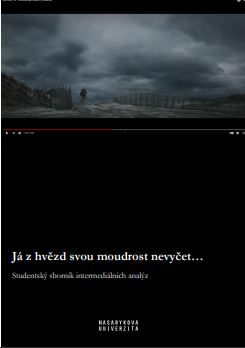
… ač ve hvězdách si často čtu a rád… – od titulu ocitovaného ze Shakespearova Sonetu 14 bychom takto docela dobře mohli pokračovat i druhým veršem. Čtení sonetů i básnických ekfrází je totiž často nahlížením do hlubin lidské zkušenosti a čtením hvězdným, povznášejícím. Naše úsudky o nich však opravdu nevzešly z hvězd, ale z aktivního propojení literárněvědných znalostí a nástrojů s těmi intermediálními. A sborník, do kterého právě nahlížíte, nevznikl ani k nějakému výročí, ani jako výsledek studentské konference či soutěže. Vzešel z radosti ze společné interpretační práce studentek, studentů a dvou vyučujících. Zázemí osvojování poznatků a diskusím poskytl seminář Intermediální a adaptační studia, který je zařazen do prvního ročníku navazujícího magisterského studia Literatura a mezikulturní komunikace na FF MU.
More...
Filmová reprezentace Shakespearova Sonetu 103 byla natočena 16. června 2015 v interiéru newyorského hotelu Algonquin na Mahattanu. Ve filmu režírovaném Jonahem Salanderem vystupují Mac Brydon a Jane Cortney.
More...
Sonet 147 režisérky Gretchen Egolf z roku 2013 začíná němým záběrem beze slov, přesto velmi dynamicky – vidíme rozhrnující se a ve větru se nadouvající závěsy, slyšíme ruchy města a mezi nimi houkající sirénu sanitky. Hned první záběr je bezpochyby významotvorný. Rozhrnující se závěs nám může připomínat otevírající se oponu na začátku představení, která nám sděluje, že záhy uvidíme něčí příběh a máme se připravit. Zvuky záchranky ovšem záběr značně dramatizují – houkání sirény představuje kulturně pevně ukotvenou reprezentaci situace, kdy se někomu něco stalo a on potřebuje pomoct. První záběr záměrně navozuje tuto „nervózní“ atmosféru.
More...
Shakespearův Sonet 151 z poslední části sbírky adresované „černé dámě“ představuje sonet plný rozporů, touhy, tělesnosti a explicitně eroticky zabarvených metafor, popisující přitažlivost podřizující muže ženě, po které touží. Básník zde oslovuje svou milenku („sladkou zrádkyni“) a apeluje na ni, aby jej neobviňovala ze hříchů, kterých se sama dost možná dopouští. Zatímco ona nejspíše hřeší tím, že je mu nevěrná, on sám se proviňuje tak, že dovoluje svým touhám, svému tělu a chtíči, aby řídily jeho jednání, čímž zrazuje svou duši – své srdce, rozum či svědomí pokaždé, když se nechá touto ženou opět zlákat. Uvědomuje si, že jeho tělesné potřeby jsou schopny zatemnit mu úsudek a že jeho láska je založena čistě na fyzické přitažlivosti. Tělesné opojení ho zcela naplňuje, jak ostatně vyjadřuje synekdocha „mužské pýchy“. Je ochotný se oslovené ženě podrobit, být jejím „ubohým otrokem“, jenom aby ji později mohl získat a ulehnout vedle ní. O svých činech však přemítá a vykresluje tak rozpor mezi hlasem těla a duše.
More...